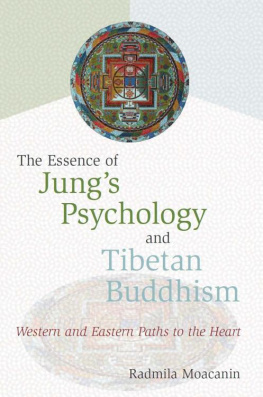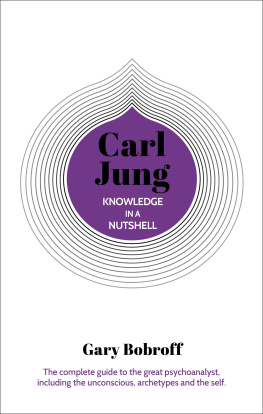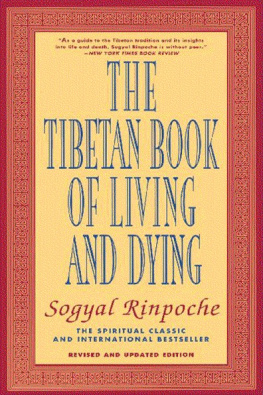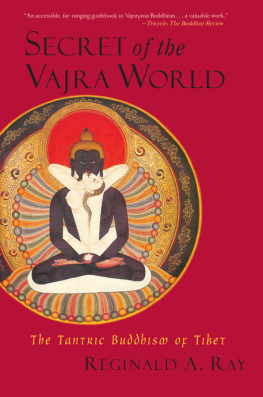THE ESSENCE OF
JUNGS PSYCHOLOGY
& TIBETAN BUDDHISM


Wisdom Publications
199 Elm Street
Somerville MA 02144 USA
www.wisdompubs.org
Radmila Moacanin 2003
All rights reserved.
No part of this book may be reproduced in any form or by any means, electronic or mechanical, including photography, recording, or by any information storage and retrieval system or technologies now known or later developed, without the permission in writing from the publisher.
Library of Congress Cataloging-in-Publication Data
Moacanin, Radmila
The essence of Jungs psychology and Tibetan Buddhism :
western and eastern paths to the heart / Radmila Moacanin
p. cm.
Originally published: Jungs psychology and Tibetan Buddhism.
London : Wisdom, 1986.
Includes biblioraphical references and index.
ISBN 0-86171-340-0 (pbk. : alk. paper)
1. BuddhismPsychology. 2. Jung, C. G. (Carl Gustav),
18751961. 3. BuddhismChinaTibet. I. Title
BQ4570.P76 M63 2003
294.3/375dc21
2002155427
14 13 12 11 10
5 4 3
Cover design by Jen Collins. Interior design by Gopa & Ted2, Inc. Set in Sabon, 10.5/14 pt. Cover : Vajrabhairana thirteen-deity mandala. Phography by Hiroki Fujita.
Wisdom Publications books are printed on acid-free paper and meet the guidelines for permanence and durability of the Committee on Production Guidelines for Book Longevity of the Council on Library Resources.
Printed in the United States of America
 This book was produced with environmental mindfulness. We have elected to print this title on 30% PCW recycled paper. As a result, we have saved the following resources: 8 trees, 3 million BTUs of energy, 794 lbs. of greenhouse gases, 3,822 gallons of water, and 232 lbs. of solid waste. For more information, please visit our website, www.wisdompubs.org. This paper is also FSC certified. For more information, please visit www.fscus.org
This book was produced with environmental mindfulness. We have elected to print this title on 30% PCW recycled paper. As a result, we have saved the following resources: 8 trees, 3 million BTUs of energy, 794 lbs. of greenhouse gases, 3,822 gallons of water, and 232 lbs. of solid waste. For more information, please visit our website, www.wisdompubs.org. This paper is also FSC certified. For more information, please visit www.fscus.org
Contents
If some great idea takes hold of us from outside,
we must understand that it takes hold of us
only because something in us responds to it,
and goes out to meet it.
C. G. Jung
Since this book was first published much has happened in our world that makes the teachings of Tibetan Buddhism and the work of Jung even more relevant. The past century ended and the new one was ushered in with an explosion of violence, indiscriminate killing, and revenge: the eye-for-an-eye attitude thatas Gandhi saidleads to a blind world. In addition, our planet, the only habitat we have, one that we share with all other living beings, has been deeply wounded: earth, water, and air have been poisoned by mindless exploitation and by man-made instruments of destruction, all in pursuit of power and self-centered interests.
In the last decade or so we have seen enormous and increasingly accelerated advances in technology with relatively few advances in the spiritual realm. Militarism, materialism, and consumerism have run amok to the point of drowning Western civilization and rapidly infecting the rest of humanity. Together they emphasize the external and disregard the inner world. As a result our world is not only blind but unconscious and asleep.
There are, however, some signs in Western culturealbeit a minority subcultureof a slowly emerging trend, a paradigm shift beyond scientific materialism to greater self-awareness and mental receptivity; to interest in meditation and the intersection of psychology and spirituality; to examining ones values and simplifying ones life, including career changes, for a more fulfilling existence; in brief, there is a trend away from Logosthe pure intellect that analyzes, judges, and dividesto Eros, which relates and connects, and brings the realization of our interconnectedness and interdependence. This shift touches our depths, opening us to larger dimensions, to the ineffable mystery of life and death, and leading us to the spiritual transformation that Tibetan Buddhism and the work of Jung are all about.
The mere fact that this book has gone through three printings and two editions and has been translated into eleven languages shows that there is a hunger for the perennial wisdom of East and West as eloquently expressed both by Tibetan Buddhism and by Jung.
Tibetan Buddhism has become relatively well known, especially since 1989 when the Dalai Lama was awarded the Nobel Peace Prize. Today he is regarded by many as the worlds greatest and most inspiring religious leader, thanks to his unwavering commitment to nonviolence, his unconditional respect for human life, and his reverence for all living beings and the environment within which they live. Jung, however, is still not properly understood, and his vital contributions have not been fully recognized even by Western psychology.
This second edition includes an epilogue in which I explore a few of the most significant topics at the intersection of Jungs psychology and Tibetan Buddhism, with special emphasis on their relevance to our present world.
This book had its origins in Europe, when some years ago the Tibetan Buddhist master, Lama Thubten Yeshe, flew West from Asia to give teachings, and I flew East from America to receive them. One day in a private interview with him, knowing of my interest in Jung, he asked me unexpectedly to give a talk on Jungs psychology and its relation to Tibetan Buddhism. I protested: I was totally unprepared and knew so little about it. But Lama gently insisted. Frightened, I kept pleading with him to be excused from such an impossible task, but he was relentless and would not hear of it. For the first and only time in my acquaintance with Lama Yeshe, I truly believed we had failed to communicate. Little did I know what was to follow.
Later that very same day I quietly sat cross-legged on the floor of the meditation room in front of a large audience of Lama Yeshes students and proceeded to deliver the talk. It turned out to be a memorable and a major event in my life. From then on I was gripped by the urge to learn and experience more of the two traditions. I began traveling on that exciting journey East and West, West and East, and in my mind, each of the two disciplines supplemented, helped explain further, and enriched the other. As a result, a few years later this book was produced. Synchronistically, just as it came into being in California, Lama Yeshe arrived there after a long absence. I showed him the work, and he immediately encouraged me to have it published. Once again I was reluctant, but once again it was a task from which I could not be excused.
The book attempts to draw parallels, and discuss similarities and differences, between Tibetan Buddhism and Jungs psychology. The purpose is to identify possible connections so as to make a bridge between some aspects of Eastern and Western philosophical and spiritual traditions, psychological and ethical systems.
One of the main problems I want to investigate is the following: since the two traditions have developed at different historical times, under vastly different sociocultural conditions and geographically at two opposite sides of the world, are they intrinsically discrete and of psychological and ethical value only to the people where each developed? Or is it possible to reconcile the two traditions, bring the twain together, allow a cross-fertilization, synthesize and adapt the findings, methods, and wisdom of the respective systems to the needs and conditions of contemporary society, regardless of geographical boundaries?
Next page









 This book was produced with environmental mindfulness. We have elected to print this title on 30% PCW recycled paper. As a result, we have saved the following resources: 8 trees, 3 million BTUs of energy, 794 lbs. of greenhouse gases, 3,822 gallons of water, and 232 lbs. of solid waste. For more information, please visit our website, www.wisdompubs.org. This paper is also FSC certified. For more information, please visit www.fscus.org
This book was produced with environmental mindfulness. We have elected to print this title on 30% PCW recycled paper. As a result, we have saved the following resources: 8 trees, 3 million BTUs of energy, 794 lbs. of greenhouse gases, 3,822 gallons of water, and 232 lbs. of solid waste. For more information, please visit our website, www.wisdompubs.org. This paper is also FSC certified. For more information, please visit www.fscus.org